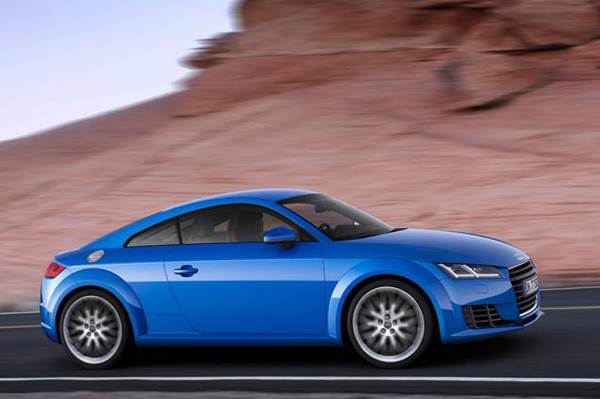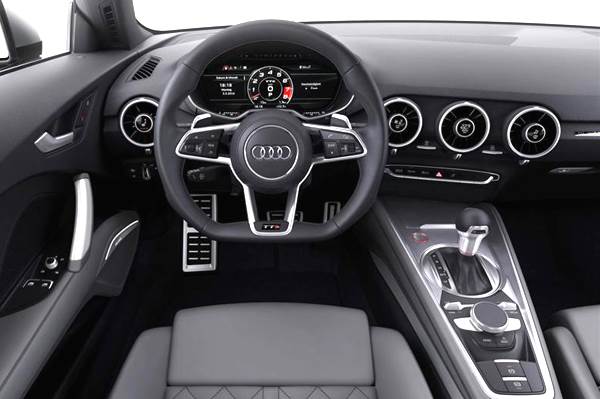The new Audi TT features a completely rethought construction, which mixes steel and aluminium in a new and more cost-effective way, which results in a car that is 50kg lighter than before as well as one that is 23 percent torsionally stiffer.
The body, including doors, now weighs 276kg, and in 2.0 TFSI form the new TT weighs just 1230kg overall. The Mk2 TT pioneered hybrid steel and aluminium construction uses lightweight aluminium (in pressed, cast and extruded forms) for the entire front section of the car’s structure, with pressed steel employed for the rear bulkhead and rear structure behind the seats.
The architecture of the new model takes a much more pragmatic approach to hybrid construction by making use of the VW Group’s pressed steel MQB platform, albeit with the shortest wheelbase yet of any MQB-based model, at 2505mm.
The TT’s front and rear crash structures, bulkhead and floor pressings are MQB-derived, with the lower bulkhead, toeboard and centre tunnel made from the strongest hot-formed high-strength steels. Audi says the hot-formed pressings weigh 39.5kg and account for a quarter of the structural weight.
However, the crucial structure that forms the base of the A-pillar and caps the ends of the bulkhead is made from a giant aluminium casting, which also helps to reinforce the inner wings and suspension top mounts, in turn helping to improve steering accuracy.
The rest of the TT’s structure — in effect, the ‘top hat’ on the MQB platform — is made from aluminium extrusions and pressed aluminium sheets. The A-pillars, sills and door crash beams are made from extrusions, while the upper body inner structure, side pressings, door skins, bonnet, wings, roof and hatchback are all made of pressed aluminium.
The TT’s body, the firm says, is held together with 3020 spot welds, 1113 rivets, 44 solid punch rivets, 128 self-tapping screws, 199 clinched joints, 1.9m of MIG/MAG welding and 4.9m of laser-welded seams. Where steel and aluminium components are joined, adhesives are used to prevent corrosion between the two metals as well as adding stiffness to the bodyshell.
New TT's tech revealed
Dial-a-drive
The quattro all-wheel drive system is now integrated into the Drive Select system, offering five different modes. Drive Select can, for example, reduce understeer when accelerating in a bend by predictively sending more torque to the rear. Data on steering angle and yaw rate are also fed into the quattro system’s software.
Smart shifting
The optional S-tronic dual-clutch automatic gearbox has a variable shift programme and an eco ‘coasting’ mode.
Front wheels
A power distribution unit varies torque sent to each rear wheel. Torque sent to the front is affected by the brakes.
Clever chassis
The chassis is claimed to have a degree of ‘intelligence’ since the drivetrain and suspension components work in harmony.
Bringing up the rear
The Haldex clutch that meters torque to the rear wheels has a quicker-acting hydraulic pump controlled by Audi’s software.





Comments
Member Login
Personal Details
No comments yet. Be the first to comment.